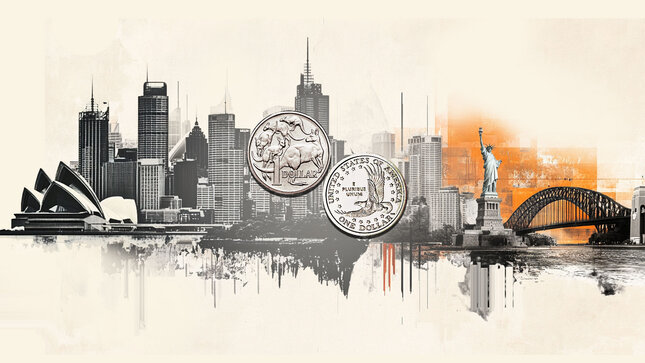Australia unemployment rate projected flat at 4.2%, pointing to subdued labor market momentum

Australia will release its August monthly employment report on Thursday at 1:30 GMT, and market participants anticipate yet another month of moderate growth in the labor market.
The Australian Bureau of Statistics (ABS) is expected to announce that the country added 22,000 new job positions in the month, while the Unemployment Rate is forecast to remain stable at 4.2%. The Participation Rate is also expected to remain unchanged at 67%.
Australian ABS reports both full-time and part-time positions through the monthly Employment Change. Generally speaking, full-time jobs imply working 38 hours per week or more, usually include additional benefits and they mostly represent consistent income. On the other hand, part-time employment generally means higher hourlyratesbut lacks consistency and benefits. That’s why the economy prefers full-time jobs.
Australian unemployment rate expected to remain unchanged in August
Employment figures are crucial in terms of monetary policy, as most central banks base their decisions on labor conditions and inflation levels. The Reserve Bank of Australia (RBA) is no exception. Policymakers met early in August, and the Board decided to lower the Official Cash Rate (OCR) by 25 basis points (bps) to 3.6% from 3.85%, explaining that, on the one hand, inflation has continued to moderate, while on the other hand, “labor market conditions have eased further in recent months.”
Indeed, recent employment-related data has been on the disappointing end, as data from the last few months have been quite soft. The economy lost 1,100 positions in May, added 1,000 in June, and gained an additional 24,500 in July, far below the 87,600 reported in April.
A loosening labour market is generally understood as negative for the economy, but it also means the central bank has no reason to keep interest rates at high levels. Most central banks have claimed that the strength of the sector has somehow limited their ability to further lower interest rates, and Australia is no exception.
Following the RBA’s announcement, the central bank released the Minutes of such a meeting, which showed the Board judged some “further reduction in the cash rate likely needed over the coming year,” while adding that incoming data would determine the pace of rate cuts. Policymakers also noted that the labor market remained a little tight, inflation was still above the midpoint, and domestic demand was recovering.
Other than that, it is worth remembering that Australia's wage inflation is reported separately from the monthly employment data every quarter. According to the latest data available, the wage price index grew 3.4% on a yearly basis in the second quarter of 2025, the same rate of increase as seen in the three months to March, and slightly above the 3.3% anticipated. However, on a quarterly basis, the wageprice indexrose 0.8% in Q2, easing from the previous 0.9% and matching expectations.
With that in mind, the upcoming employment report will be read on how it could impact the upcoming RBA’s decisions. Stronger-than-anticipated job creation could boost demand for the Australian Dollar (AUD) as it would not only be positive for the economy, but also delay future interest rate cuts.
A weak employment report, on the other hand, should weigh the Aussie lower and leave the door open for additional cuts in the foreseeable future.
When will the Australian employment report be released and how could it affect AUD/USD?
The ABS August report will be released early on Thursday. As previously noted, the Australian economy is expected to have added 22,000 new job positions in the month, while the Unemployment Rate is foreseen at 4.2% and the Participation Rate at 67%.
In addition, theFederal Reserve(Fed) announced its decision on monetary policy following a two-day meeting. The central bank cut the benchmark interest rate by 25 basis points (bps), as expected. At the same time, the Summary of Economic Projections (SEP) anticipates two additional interest rate cuts this year, in line with the market’s expectations, while confirming investors’ speculation of three rate cuts before the year's end. As a result, the US Dollar came under renewed selling pressure, helping AUD/USD extend its yearly advance.
Valeria Bednarik, Chief Analyst atFXStreet, notes: “The AUD/USD pair hit a fresh 2025 high of 0.6707 ahead of the release of employment data, but changed course afterwards. The near-term picture is bearish, with the 4-hour chart showing the pair piercing a bullish 20 Simple Moving Average (SMA) currently in the 0.6660 price zone. A firm recovery above the level should see the pair retesting the aforementioned yearly high ahead of the 0.6730 price zone."
Bednarik adds: “The AUD/USD pair could ease further once below the initial support in the 0.6630 area, with 0.6590 coming up next.”
Australian Dollar FAQs
What key factors drive the Australian Dollar?
One of the most significant factors for the Australian Dollar (AUD) is the level of interest rates set by the Reserve Bank of Australia (RBA). Because Australia is a resource-rich country another key driver is the price of its biggest export, Iron Ore. The health of the Chinese economy, its largest trading partner, is a factor, as well as inflation in Australia, its growth rate and Trade Balance. Market sentiment – whether investors are taking on more risky assets (risk-on) or seeking safe-havens (risk-off) – is also a factor, with risk-on positive for AUD.
How do the decisions of the Reserve Bank of Australia impact the Australian Dollar?









_300xx250.jpg)

0 댓글